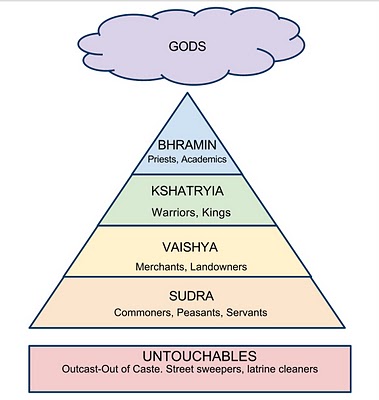Hindu Caste

Historically, Hindu society is composed of a series of endogamous* castes
People are born into a caste and their caste membership is permanent and unalterable.
Though the Indian Caste System is the best known, similar systems exist in many cultures.
Next: Karma, dharma and reincarnation
*Endogamous means that members of a group (caste in this example) may only marry other members of the same group. Their children are inevitably then also members of that group.
Also note that the illustration uses the term "untouchables." This has, for many years, been considered offensive. The preferred term is Dalit.
The version of caste presented here is extremely simplified. The castes identified here are the groups referred to as varna. However, varna are made up of groups called jati. These are often linked to specific occupations and locations. For example, in Odisha state in Eastern India, the Chasa are farmers, the Kamar are blacksmiths, and the Dobha are clothes washers. There are believed to be more than 3,000 such groups in India. Jati are identified with different varna. For example, the Chasa are identified with the Shudra varna and the Dobha with the Dalit varna.
